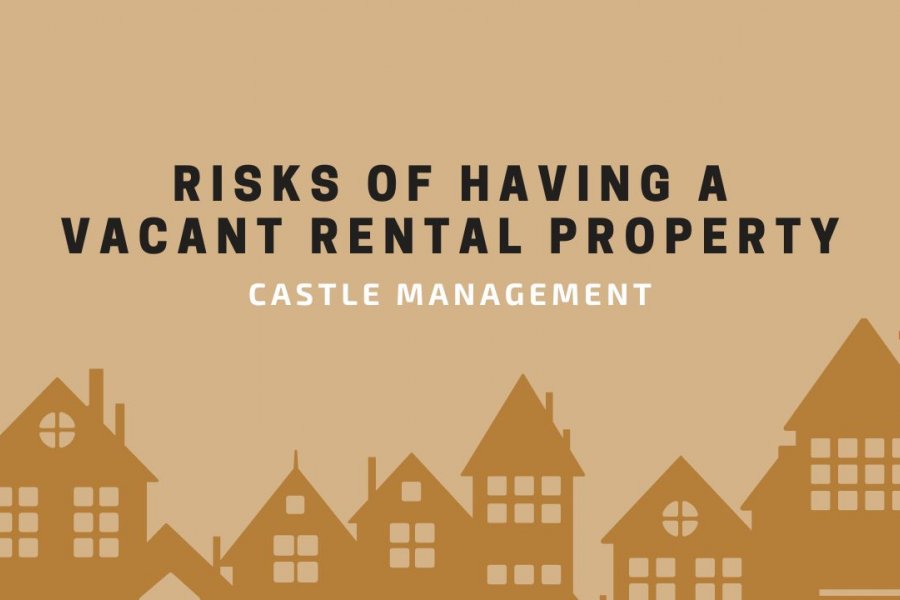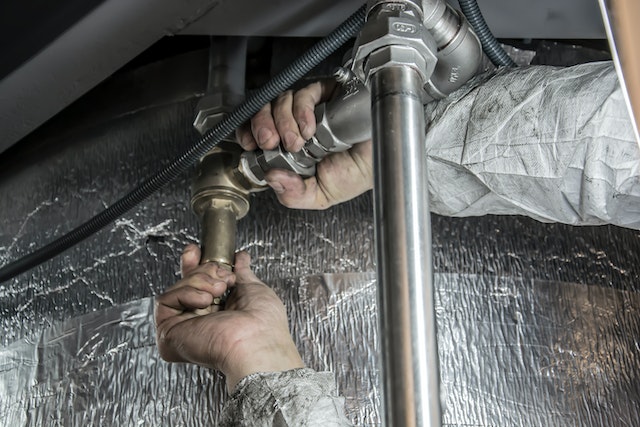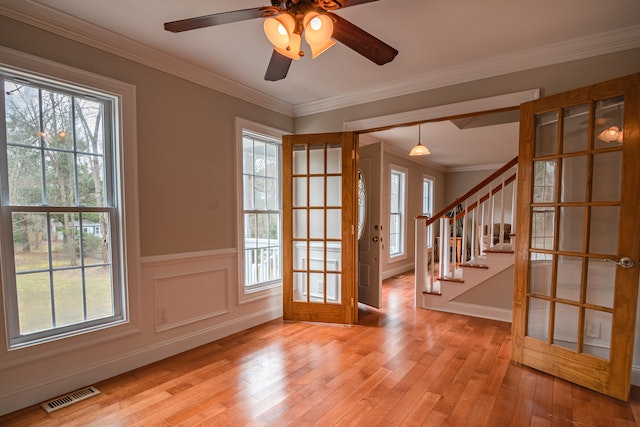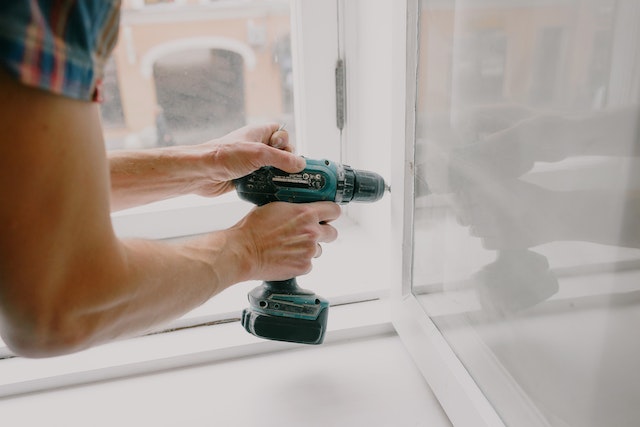
Investing in rental properties in the Bay Area can be a lucrative venture, offering a steady stream of income and long-term financial stability. However, this doesn’t mean that owning and managing your rental property is always easy!
Even with an effective marketing strategy, chances are that your rental property will be vacant at times. Economic downturns or oversaturated rental markets can make it challenging to attract tenants, leading to longer vacancy periods. This doesn’t only impact your rental income but also leaves your property vulnerable to certain risks.
At Castle Management we want your real estate investment to thrive. In this article, we will talk about the risks associated with vacant multi-family rental properties and the best strategies to mitigate them.
9 Common Risks of Having a Vacant Unit
1. Loss of Rental Income
One of the most immediate risks of having a vacant multi-family property is the loss of rental income. Each unoccupied unit represents a missed opportunity to generate revenue, impacting the property's overall cash flow.
If you rely on rental income to cover mortgage payments and other operational expenses, extended vacancies can lead to financial strain.
2. Increased Operating Costs
Vacant units tend to have higher operating costs. When your property is leased, you can trust that tenants will clean it and keep an eye out for repairs. However, when your property is vacant, you’ll have to do this yourself. Moreover, utilities, maintenance, and security expenses will still need to be covered, which can definitely make a dent in your ROI.
3. Property Deterioration
Vacant units are more susceptible to physical deterioration. Without someone watching the property on a regular basis, there’s a higher risk of problems like:
- Fire Hazards: Unoccupied properties are at greater risk of fire outbreaks, especially if utilities remain active and proper fire prevention measures are not in place.
- Water Damage: Leaks or burst pipes in vacant units can go undetected for extended periods, causing extensive water damage and mold growth.
- Pest Infestations: Vacant properties provide ideal habitats for pests such as rodents, insects, and vermin, posing a potential for health risks and property damage.
- Emergency Repairs: When someone is living on your property, it’s easier to spot problems before they escalate. When your rental is vacant for too long, even regular inspections can’t ensure you won’t have to deal with emergency repairs.

Moreover, without regular maintenance and upkeep, the property's overall condition may decline over time. This cannot only make it harder to find tenants but can also negatively affect the property’s market value.
4. Vandalism and Theft
Unoccupied properties are attractive targets for vandalism and theft. Vandals may damage the exterior and interior of the unit, while thieves may strip valuable fixtures or appliances. Securing vacant units becomes crucial to prevent such incidents and protect the property's integrity.
5. Property Code Violations
Vacant units may inadvertently lead to property code violations. Local authorities often have regulations regarding the maintenance and appearance of vacant properties. Failing to adhere to these regulations can result in fines and legal complications.
6. Squatting and Trespassing
Unoccupied units are vulnerable to squatters and trespassers. Resolving such situations can be time-consuming and may require legal action. So, it’s best to take proactive measures to secure vacant units in your multi-family rental and prevent unauthorized access.
7. Strained Relationships with Other Tenants
A multi-family property with persistent vacancies can have a negative impact on the surrounding neighborhood. This can lead to strained relationships with neighbors and other tenants, as they may be concerned about the potential negative effects on property values and community safety.
Luckily, maintaining open communication and addressing concerns can help alleviate tensions and foster positive relationships within the neighborhood.

8. Appraisal Challenges
The presence of vacant units can pose challenges during property appraisals. Appraisers may factor in the vacancies, potentially lowering the property's appraised value. This can hinder refinancing opportunities and affect your ability to leverage the asset for future investments.
9. Difficulty in Finding New Tenants
The longer your multi-family property is vacant, the harder it’ll be to attract long-term tenants. Potential renters may associate the lack of occupancy with problems such as the property being in poor condition or an unsafe neighborhood. This negative perception will make it harder to successfully advertise your rental.
How to Keep a Vacant Multi-Family Rental Property Safe
Safeguarding a vacant multi-family rental property is crucial to prevent the risks outlined above. Luckily, you can minimize vulnerabilities by doing the following things:
- Secure Entry Points: By ensuring that all doors and windows are securely locked and reinforced, you can prevent unauthorized access. If the property is in a high-traffic area, you should consider installing security bars or grilles on ground-floor windows and doors.
- Conduct Regular Inspections: Frequent property inspections can help you identify any signs of forced entry, vandalism, or damage. Moreover, it can help you address maintenance issues before they escalate.
- Invest in Good Lighting: Keeping the property well-lit, both inside and out will deter trespassers and vandals. So, consider installing motion-activated lights or timers to enhance security during nighttime.

- Purchase an Alarm System: Consider installing a monitored alarm system to alert authorities in case of unauthorized entry or suspicious activity.
- Do Regular Property Maintenance: Maintain the property to avoid emergency repairs and give the appearance of occupancy. Keep the lawn mowed, trim bushes and shrubs, and remove any debris or trash to deter vandals and squatters.
- Install Security Cameras: Installing security cameras to monitor the property's perimeter and common areas can come in handy in case of break-ins. Moreover, this security measure can make other existing tenants feel safe!
- Remove Valuables: Removing any valuable items, such as appliances or equipment, from vacant units will significantly minimize the risk of theft.
- Vacant Property Insurance: Consider obtaining vacant property insurance to protect your investment against potential losses due to vandalism, theft, or other damages that may occur during periods of vacancy.
- Partner with a Property Manager: A property management company can inspect your property regularly. This will not only help you ensure that your property is in good condition but can quickly help you find new renters. After all, it’s their job!
Bottom Line
While owning multi-family rental properties offers numerous benefits, it also comes with many potential pitfalls. For instance, many property owners overlook the potential risks associated with having vacant units for long periods.
Not taking proactive measures to prevent risks such as property deterioration, break-ins, and code violations can lead to financial losses and lengthy legal disputes. Luckily, you can keep your multi-family property safe when vacant by following the tips outlined above!
Need help keeping your Bay Area property safe? Contact Castle Management today! Our team of dedicated will ensure that your multi-family property is in good condition all year round, whether it’s leased or vacant.
